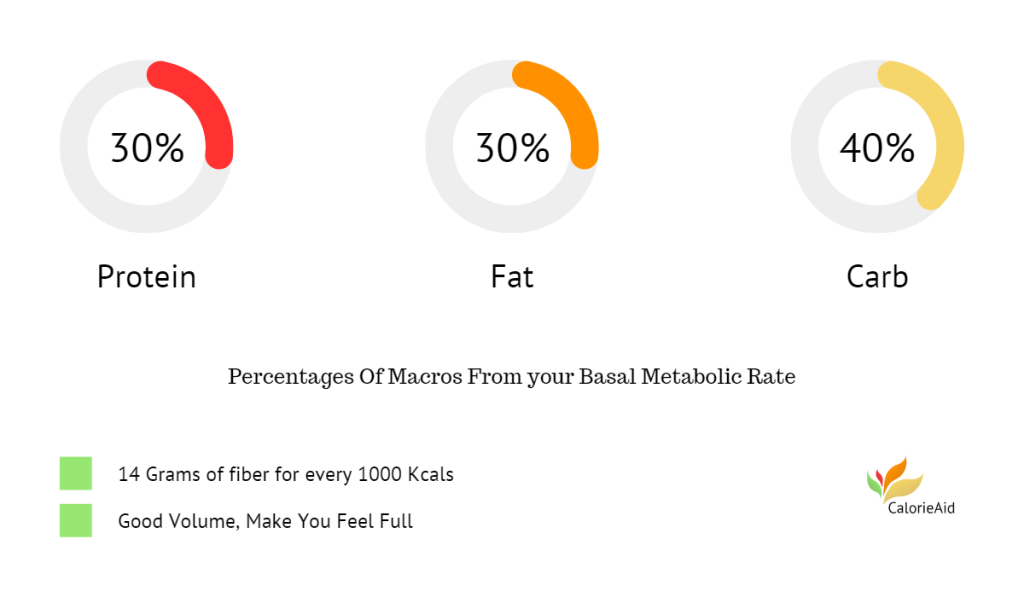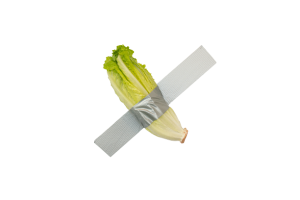With all the nutritional jargon going around these days, I am sure many people are confused when it comes to making decisions about what they eat. As nutritional research continues, it leads to an influx of new information that makes the line between healthy and unhealthy food blurrier. One of the biggest problems people face these days is forgetting the basics of nutrition (and everything else). I had this lesson repeated in front of me over and over as fellow medical professionals who sometimes think “they know better” fail to apply the most straightforward, basic concepts. But what are the basics of nutrition? What makes food healthy or unhealthy? Join me today as we try to break it down and make it easier to understand and share with you my approach to food, So let’s dive in.
Healthy food is food that has the following nutritional values: 30% protein, 30% fat, and 40% carb. It also has 14 grams of dietary fiber for every 1000 kcals, a good volume that makes you feel full, and a sufficient amount of micronutrients.

Table of Contents
Daily Nutritional Needs
I don’t think there’s a better place to start the logical analysis of healthy or unhealthy food than our bodies. If we understand ourselves fully and what we need, we can build a solid foundation. Since we’re talking basics, the most fundamental foundation of our nutrition is macronutrients and their relationship to basal metabolic rate.
Basal Metabolic Rate
Simply put, your basal metabolic rate is the number of calories your body burns when you’re at rest. It is the calories your body uses to breathe, circulate blood, build muscles, regulate digestion…etc. You can find out your basal metabolic rate by using the formula below or any online calculator for daily caloric needs.
Men: BMR = 88.362 + (13.397 x weight in kg) + (4.799 x height in cm) – (5.677 x age in years)
Women: BMR = 447.593 + (9.247 x weight in kg) + (3.098 x height in cm) – (4.330 x age in years)
Now that you know how to calculate your basal metabolic rate, we need to explore macronutrients. Finally, I will show you the relationship between the two and how can you use that to distinguish between healthy and unhealthy food.
Macronutrients
Not all calories are created equal. If all calories were the same we could have used only basal metabolic rate to measure the quality of food. Here is where our understanding of macronutrients comes into place. Our food is divided into three main macronutrients: protein, fat, and carbohydrates. We need protein and dietary fat in our bodies as building blocks, while we need carbohydrates as fuel with the excess being stored as body fat. Through the metabolic pathways, fat and protein can be converted to fuel too, so it is important not to over-consume these macronutrients too. That’s why we’re going to need to know our daily needs for these nutrients.
- For protein, you’ll need 1 gram for every kg of your lean body weight, which means around 30% of your basal metabolic rate.
- For fat, you’ll need around 30% of your total basal metabolic rate
- For carbs, you’ll need around 40% of your total basal metabolic rate.
Some nutritionists advise other ratios like 5:2:3 and that’s also fine. Everyone has different circumstances and they might need different ratios depending on their body composition, fitness goal, and activity level. Just make sure to understand the scientific rationale behind a specific ratio setting before you use it.
Distinguishing between healthy and Unhealthy foods
With these ratios in mind, you can now see what healthy food looks like. Your daily food consumption should contain these ratios above or something similar because it is not possible to get it perfect every time. The other factor that helps us to decide is the basal metabolic rate. If a meal has around 1500 kcal and your BMR is 2000 it is definitely not healthy. You don’t have to make every meal have these ratios, just your daily intake. I consume carbs for breakfast and lunch to give me energy and postpone the majority of my protein for dinner.
Finally, we have calories other than our basal metabolic rate left. These calories come from your daily activities such as walking, exercise…etc. In my opinion, your basal metabolic rate calories should remain constant as we discussed before. The rest of the calories can be used according to your fitness goal setting.
- Maintenance and Muscle gain: consume these calories as carbs and fats. Do not worry about the protein because we set this as a constant as we mentioned before.
- Fat Loss. Leave those calories out as a calorie gap.
The other important thing to consider is your fiber intake. Fiber is a type of carbs that is not digestible by your guts and we talked about it in detail in this article. Your food should contain 14 grams of fiber for every 1000 calories. For you to feel full and to improve your digestive tract health.
Healthy and Unhealthy Food: Volume
Daily nutritional needs aside, you need food that makes you feel full but doesn’t make you fat. Meaning that you need food with low caloric density. This is one reason to add a side of salad to your steak. This is especially important on a psychological level so that you don’t feel hungry and depressed all the time. This will lower your compliance with healthy eating and send you into an eating frenzy that will cause you to ditch your healthy diet. Vegetables and some fruits serve this vital role, so you need to incorporate them into your diet regularly.
Refined Food
As the food industry progressed, we started to eat more refined foods. The problem with refined food is that doesn’t have the volume and the fiber content necessary for our bodies as we discussed before. As a result, we tend to eat more of it in addition to the fact that it contains more calories. Consider olives vs olive oil calories, or whole wheat vs flour fiber content. I don’t think that technological evolution gets it 100% right every time, and whenever we find a solution for a problem, a new problem arises from that solution. In short, eat more raw vegetables and whole grains. We need to be more content with what nature offers us.
The other problem is with adding more flavor in the form of fat to the food. Sometimes you just have to compromise on the flavor, and I am always on the look for that perfect compromise. I refuse a healthy diet of bland chicken breast with brown rice and steamed broccoli, but at the same time, I won’t have a steak drowning in butter. Moderation is key.
Examples of Healthy and Unhealthy Food
Unhealthy Food
Just as we discussed before, unhealthy food has an imbalance in its macronutrient ratios. Here are some examples of unhealthy food that demonstrate this point:
- Deep-fried food such as french fries and fried chicken absorb so much of the fat they’re fried in. The ratio of dietary fat to other macronutrients is way off and can lead to weight gain.
- Many desserts have a huge amount of sugar and fat in their composition without complementary fiber and protein. Desserts should be eaten in moderation without overindulgence.
- Highly processed foods and canned foods can contain a lot of sugar to enhance the taste. Soft drinks are just pure sugar and water that can cause you to gain weight without noticing.
These are some examples and in no way it is all of the unhealthy food. The main thing to remember is to have foods with healthy ratios. I don’t think that we should quit any food entirely but rather know our body’s limitations in terms of basal metabolic rate and activity level.
Healthy Food
Here are some foods that are good for your body and have a really good macronutrient balance:
- Roasted chicken, fish, and meat. Chicken roasted with vegetables can be a very nutritious meal with very good nutritional ratios
- Soups and stews fill you up because of their large volume and have relatively low calories. They’re also good at hydrating you because of the water content.
- Chargrilled foods are not only delicious because of their smokey flavor, but also have good nutritional value. You’re not adding any fat to cook the foods and you’re essentially cooking it with it the heat and its own fat.
One important thing to note here, you can either construct your plate just like the guidelines presented by Harvard, or you can have each meal of yours focused on a certain aspect of nutrition. Like having lentil soup for lunch to support your fiber intake and having chicken breast for dinner to support your protein. You can also see my article about the 10 principles to enhance your fitness.
Conclusion
This concludes our article on the healthy and unhealthy food comparison. It is detrimental to our own health to know our bodies and what they’re capable of. Our metabolic rate, activity level, and our food composition play a huge part in what can we eat. Which food you love is bad or good for you? Let me know in the comments below and as usual share this article with someone confused about their food choices.


